This post may contain affiliate links. If you click through a link and make a purchase, I may receive a commission at no additional cost to you. As an Amazon Associate, I earn from qualifying purchases. Read the full disclosure here.
After a good quality yoga mat, blocks should be next on your radar to get the most out of your practice.
Such a simple piece of foam provides endless options to support, deepen, and add dimension to any practice from beginner to advanced.
Yoga blocks are some of the most versatile props you can add to your practice.
If you’ve ever shunned props, think again.
This post is about how to use yoga blocks to deepen your practice and prevent yoga injuries.
Disclaimer: This content is for educational purposes and is not medical advice. Read the full disclaimer.
What does deepend your practice mean?
Let’s talk about the phrase “deepen your practice” for just a second. If you’re new to yoga, this might sound like intimidating wording.
But don’t worry, it doesn’t only mean to “stretch deeper.”
If we go “deeper” into the meaning, we find that it also means:
- to become or to cause something to become stronger or more powerful
- to make something fuller or more complete (such as knowledge or understanding)
So when you hear this phrase, think to expand your practice with knowledge and have a better understanding of yourself and how to calm your mind. You don’t have to be at a certain level, come as you are.
Also, keep in mind that deepening your practice is very multi-faceted can mean different things to different people.
Contrary to popular belief, the ability to twist yourself up like a pretzel and balance on your pinky toe (and get 5000 likes) doesn’t mean you’ve deepened your practice.
So how do you avoid injury while deepening your practice?
Keep reading.
Because hopefully, you’re practicing yoga so you can be healthy not only today but for years to come.
Common yoga injuries
First, let’s take a look at some of the most common types of Yoga injuries.
Yoga is becoming increasingly popular, and there are limited studies on yoga injuries. But just because yoga can be a more gentle form of exercise does not mean its free from injury.
A 2016 study by Swain et al. looked at yoga-related emergency room visits between 2001-2014. Almost half of the injuries were sprains/strains in the trunk area. The study found that yoga injuries increased during this period, and participants older than 65 were eight times more likely to have an injury.
The study cited lack of quality instruction as a reason for an increase in yoga injuries; however, they did not specify whether the injuries were from a home practice via videos, yoga or similar class at a mainstream gym, or a private yoga studio.
Don’t let these numbers scare you.
Cramer et al. noted that yoga appears to be as safe or safer than other forms of exercise based on the overall injury rate per 1000 hours of practice.
There’s a lot you can do on your end to help prevent yoga injuries. More on this in the next few sections!
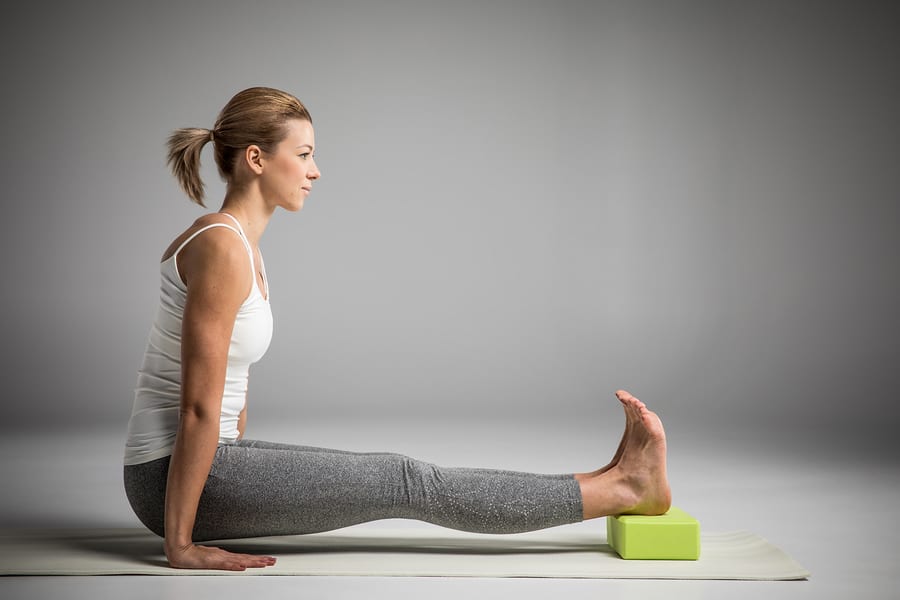
Let’s take a closer look at some of the most common yoga injuries to get an idea of what we’re trying to avoid.
According to a survey performed in 2007 published in the International Journal of Yoga Therapy, most Yoga injuries are caused by executing poor technique or alignment, having a previous injury, excess effort by participants, and improper or inadequate instruction. (Fishman et al., 2009)
Common yoga injuries include:
- Sprains and strains – especially neck, lower back, and hamstrings
- Shoulder injuries
- Wrist injuries
- Hip injuries
- Knee injuries
According to the results, neck injuries were most frequent in headstand and shoulder stand positions.
Low back injuries were commonly attributed to forward bends, twists, and backbend poses.
Wrist and shoulder injuries were reported during downward-facing dog and plank variations.
Knee injuries are thought to be associated most frequently with Warrior I/II, pigeon, hero, and lotus. (Fishman et al., 2009)
To learn more about injuries and how the body works together, please read some of the other great articles on the blog:
Why should you use yoga blocks?
Some of my favorite yoga props are blocks, straps, blankets, and bolsters. Each has its place in injury prevention.
Today we’re going to focus on the yoga block.
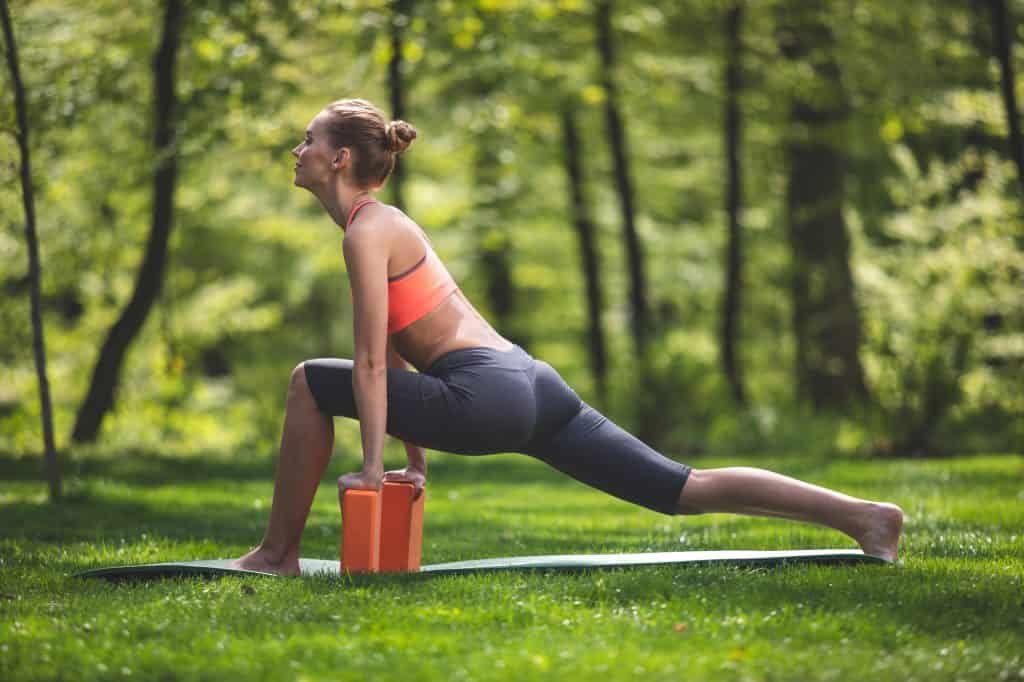
How can yoga blocks help you?
In case you’re not familiar with yoga blocks, they are one of the most versatile yoga props you can use.
Yoga blocks are typically made out of foam, cork, or wood. Your preference of material might depend on what you use blocks for the most.
Size-wise, they are approximately 9 x 6 x 4 inches and can vary slightly.
Their three-dimensional rectangular shape provides three levels of height so you can perfectly support whatever you need today.
Yoga blocks allow you to work up to poses as you gain strength and flexibility, or keep using it as your preference for what your body needs.
It’s your practice, so you’re not competing with anyone.
How to use yoga blocks
My yoga teacher brought me a block, does that mean I’m bad at yoga?! OMG, so embarrassing!
Not at all.
It means you have a good teacher who recognized how to help you get the most out of your practice and cares enough to prevent you from getting hurt so you can come back another day.
Reasons to use a yoga block
- To support range of motion (ROM) and proper alignment, allowing you to engage the right muscles to avoid injury
- To make yoga accessible to all levels
- To help deepen poses by bringing the floor to you
- To assist as stepping stones to learning more advanced poses
- Alongside other props for restorative postures
- To increase intensity for core strengthening activities
Anything you need, there’s a block for that.
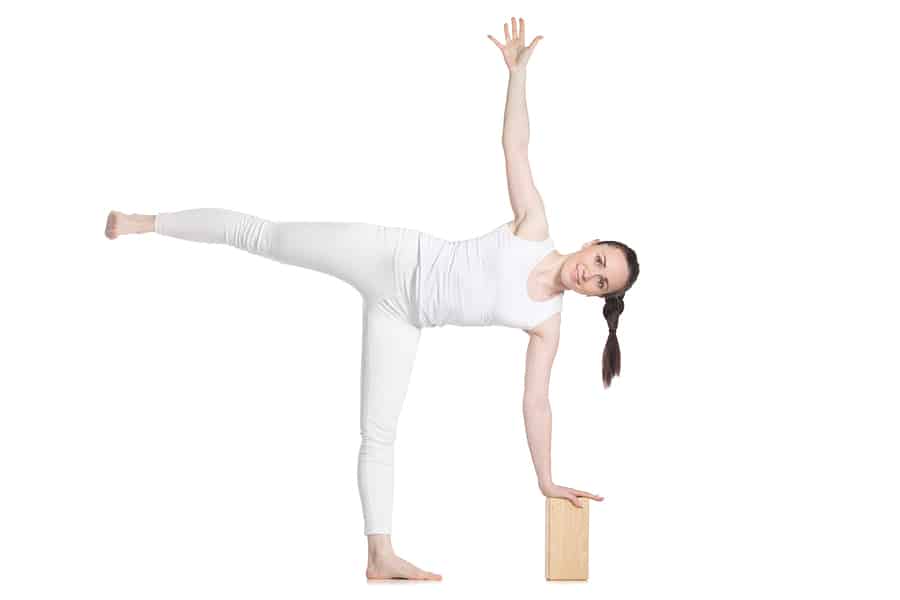
Pose ideas to use yoga blocks
These are just some of the many poses to incorporate a block.
To elevate the hips
Those with tight hips might enjoy a block under the hips in cross-legged seat and pigeon pose.
Sitting on a block for yogi squat can help those with hip tightness and lack of ROM and the knees/ankles.
Elevating the hips is also a modification for lack of ROM in the knees.
An example of this would be sitting on a block for hero’s pose. If it isn’t comfortable to sit back onto your heels, elevate your hips on a block to protect your knees.
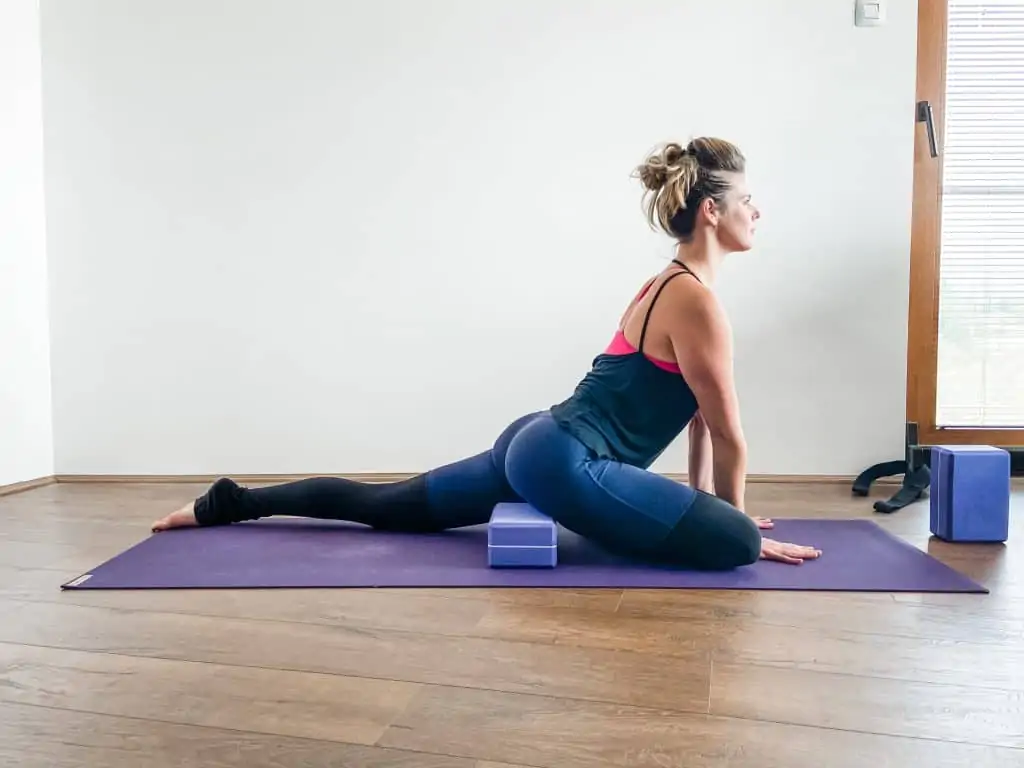
To protect the knees
Lacking ROM in the hip can transfer stress to the knee joint.
Supporting the available ROM with blocks allows you to get deeper into poses while providing support for both joints.
An example of this would be placing blocks under the knees in cobbler’s pose to raise the floor to you.
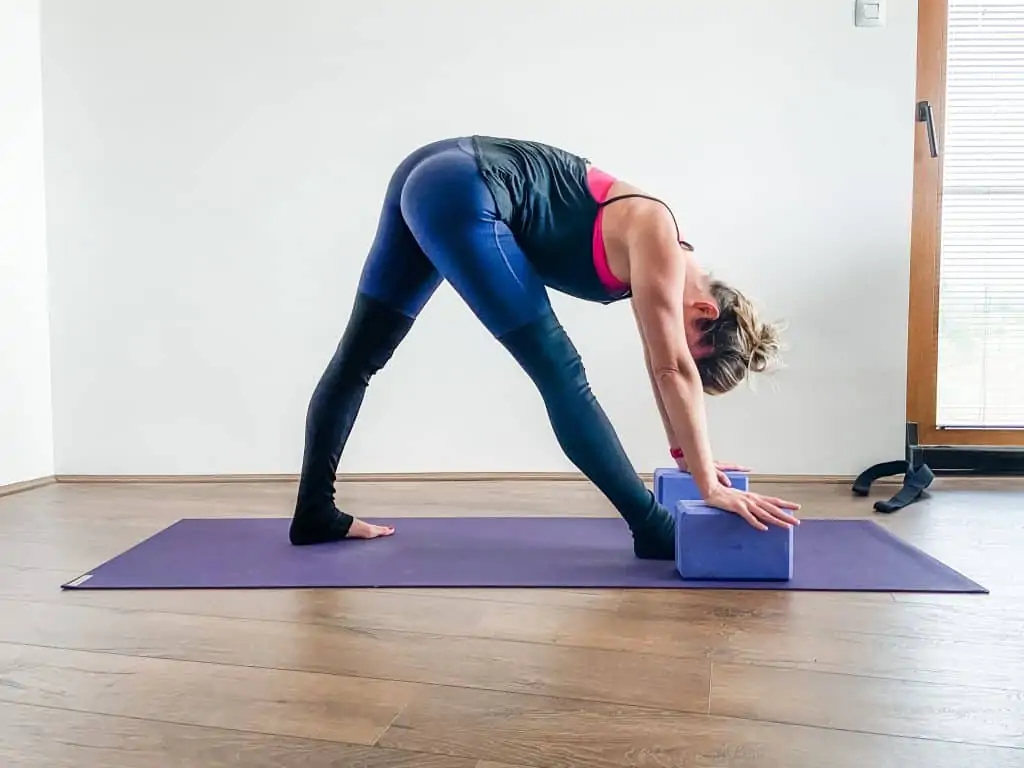
To bring the floor to you
A block is a smart option for poses such as forward fold, revolved lunge (easy twist), triangle/revolved triangle, and half splits to avoid poor posture and straining muscles. These are just a few of the many options.
You can use a block in any pose when you feel it’s a struggle to reach the floor, compromising your form and breathing. Remember, breath is a significant part of yoga.
As a headrest
I’m a fan of resting my head on a block in wide-leg forward fold and pigeon. Resting the head on a block allows you to take the strain out of the neck and focus on getting deep into the pose.
Using a block as a headrest is especially helpful in styles of yoga in which poses are held for more extended periods, as in Yin.
For a balance assist
A block can help you balance and provide stepping stones to progress to more advanced poses such as crow and half-moon.
Half-moon pose is a very challenging standing pose.
I once got too confident and didn’t use a block. A muscle in my right hip (the TFL to be exact) decided it was going into a spasm — mid-half-moon.
That was a fail, and totally my fault. My hip was cranky for over a week, and I had to spend a lot of time undoing the damage from my overzealous half-moon fiasco.
See? You’re not alone.
As supportive props for restorative poses
Have you ever tried supported fish pose? Yoga blocks can cradle you just right to relax in this juicy heart opener.
Another place I love to use a block is for supported bridge pose. The height of the block creates a gentle inversion. I also love to expand on this and straighten one leg at a time for a gentle yet effective psoas stretch.
In a restorative pose, you can set yourself up with necessary props to be comfortable and stay for several minutes.
As a strength builder
An example of this would be squeezing between thighs or hands to stabilize and activate more muscles.
To stretch deeper
Yoga blocks can be used to get deeper into a pose, for example putting your elbows on blocks during puppy pose.
For some yoga poses, you may even enjoy a deeper stretch when properly aligned with a yoga block.
Stretching deeper should be explored with caution as it can increase soft tissue injury including ligaments and joint capsule in those who are extremely flexible (hypermobile).
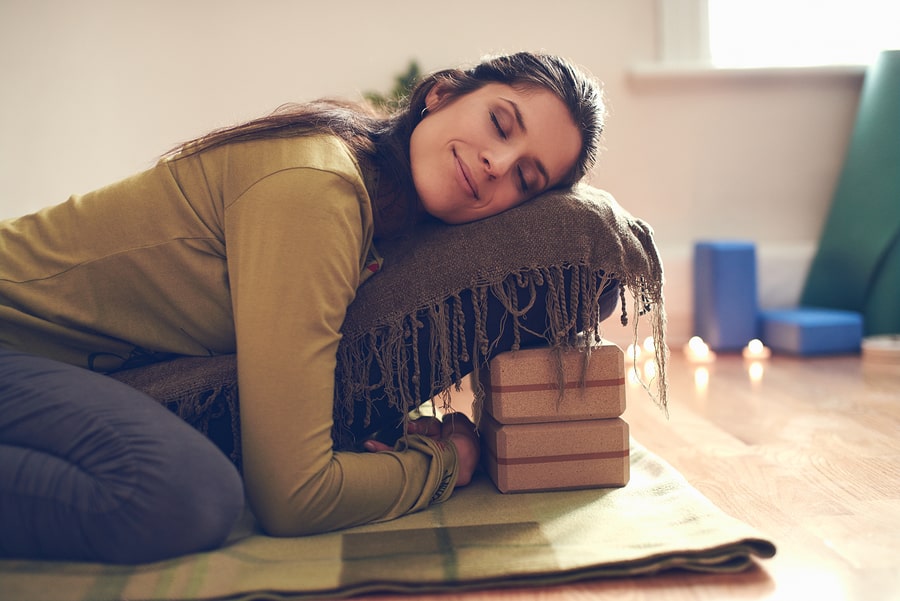
Who should get yoga blocks
Anyone practicing yoga at home or in a gym setting that does not have props would benefit from getting some blocks.
Studios typically have props available for students. Or if you’re particular about your favorite type of block. No judgment.
Best yoga blocks
There’s a block to suit every practice and price point. Here are some awesome yoga blocks to check out!
- Best foam block: Hugger Mugger Foam Yoga Block
- Best budget foam blocks (set of 2): Clever Yoga Foam Block Set
- Best cork yoga blocks: Jade cork yoga block
- Best wooden yoga blocks: Hugger Mugger bamboo yoga block
- Best ergonomic yoga block: Manduka unBLOK
Yoga block materials
It seems like there are many different types of yoga blocks, and there are! The best type for you is a personal preference. Here’s a quick breakdown of popular materials to get you started.
Foam yoga blocks are inexpensive and lightweight. They can offer more cushioning than other types of materials and might be more comfortable on your joints. Foam blocks are ideal for beginners.
Cork yoga blocks are made from molded cork. Cork blocks are heavier and offer solid support. Cork is an eco-friendly option made from sustainable materials. These blocks are slightly more expensive than foam.
Wooden yoga blocks are usually made from bamboo and can be lightweight. Wooden blocks are more expensive than foam and do not have any give to their support. Bamboo yoga blocks can also be an eco-friendly option.
They offer firm support but may be uncomfortable for some poses such as restorative bridge pose with a block under the sacrum.
Ergonomic yoga blocks are a new take on the traditional yoga block and have some type of curved shape to them to better contour to your body.
Other tips to prevent yoga injuries
Do your research
Know what your injuries, conditions, or concerns are before you start yoga.
Speak with the instructor and let them know ahead of time about what you’re comfortable with. If you’re not comfortable with hands-on adjustments, speak up. It’s your body.
Caution with home yoga videos if you have minimal experience
It can be nerve-racking to step into a yoga class for the first time, making free at-home YouTube videos an attractive option. However, if you have no experience with yoga, this can be a bit risky.
Many instructors do not recommend starting from scratch with home-based practice. (No, this isn’t a conspiracy theory to get you to pay money for yoga.)
With a video, you have no way of knowing if your form is correct or if the level is appropriate for you. Modifications specific to your needs may not be provided.
Home yoga can be a wonderful resource to advance your yoga practice. As a beginner, try to attend at least a few classes in person to have the opportunity to ask questions and receive feedback.
Listen to your body
Respect where your body is today. You can have the best instructor in the world, but if you don’t listen to your body, you’re destined to run into an injury sooner or later. It’s your responsibility to know your limits.
Poses should never be painful. Or extremely uncomfortable, for those who are too macho to admit something hurts.
Only you know how things feel to you. Don’t ignore it.
Read Body Awareness for Injury Prevention.
Learn about proper form
When you first start, there will be a lot of new yoga vocabulary, and it can be a bit daunting.
After a while, some of that should become more second nature. Instructors give valuable cues for posture and alignment to keep you safe.
Don’t just let these go in one ear and out the other!
Make an effort to put these cues to good use. It will help you get better and prevent injury in the long run.
Ask for modifications
Stockpile modifications that you can plug-in at any moment when something doesn’t work for you. Ask multiple instructors, someone new might have a different perspective to offer, so take advantage.
It’s not a competition.
Hopefully, you began a yoga practice to help your body in the long run. There’s no level you have to be at or way you need to look to be a yogi.
Wrapping up
Yoga blocks can be a wonderful addition to any practice to support, deepen, and add dimension from beginners to advanced yogis.
Be sure to pick some up if you don’t have them!
featured image credit: Koldunov / bigstockphoto.com
References
Bekhradi A, Wong D, Gerrie BJ, et alAlthough the injury rate of yoga is low, nearly two-thirds of musculoskeletal injuries in yoga affect the lower extremity: a systematic reviewJournal of ISAKOS: Joint Disorders & Orthopaedic Sports Medicine 2018;3:229-234.
Cramer, H., Quinker, D., Schumann, D. et al. Adverse effects of yoga: a national cross-sectional survey. BMC Complement Altern Med 19, 190 (2019). https://doi.org/10.1186/s12906-019-2612-7
Loren Fishman, Ellen Saltonstall, and Susan Genis (2009) Understanding and Preventing Yoga Injuries. International Journal of Yoga Therapy: 2009, Vol. 19, No. 1, pp. 47-53. https://doi.org/10.17761/ijyt.19.1.922087896t1h2180
Swain TA, McGwin G. Yoga-Related Injuries in the United States From 2001 to 2014. Orthop J Sports Med. 2016;4(11):2325967116671703. Published 2016 Nov 16. doi:10.1177/2325967116671703

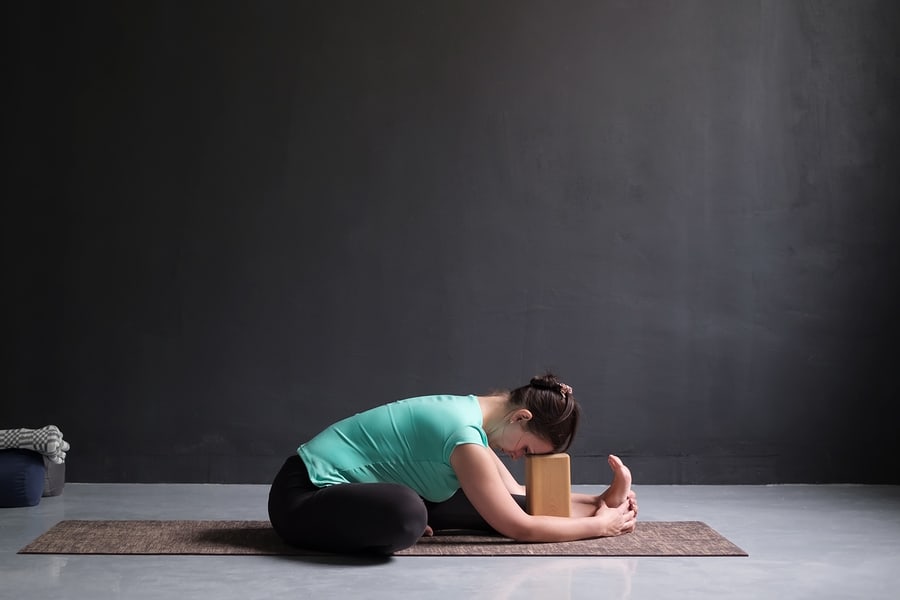
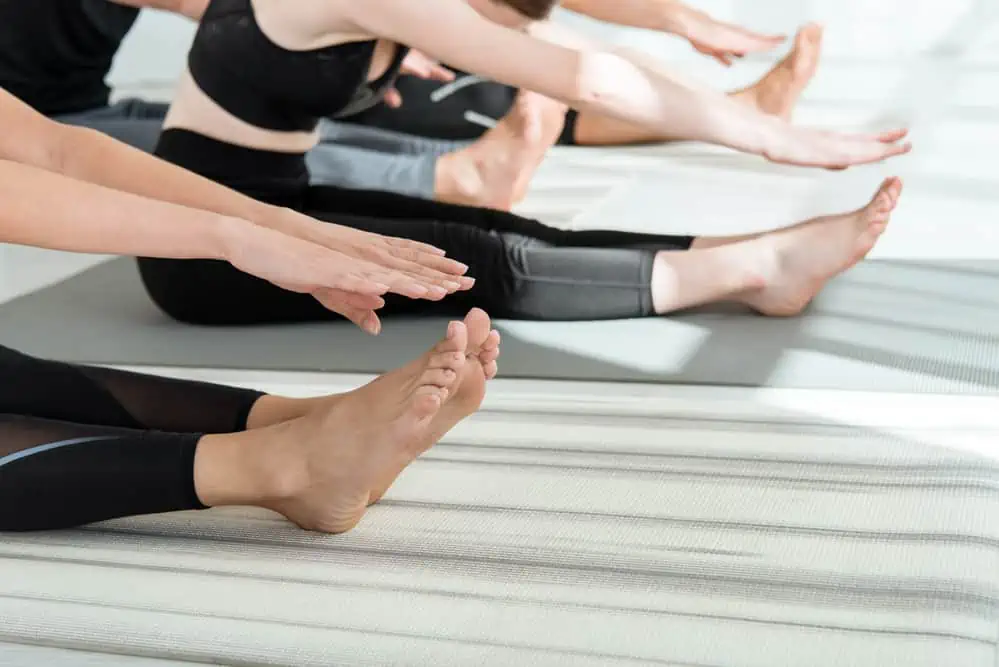
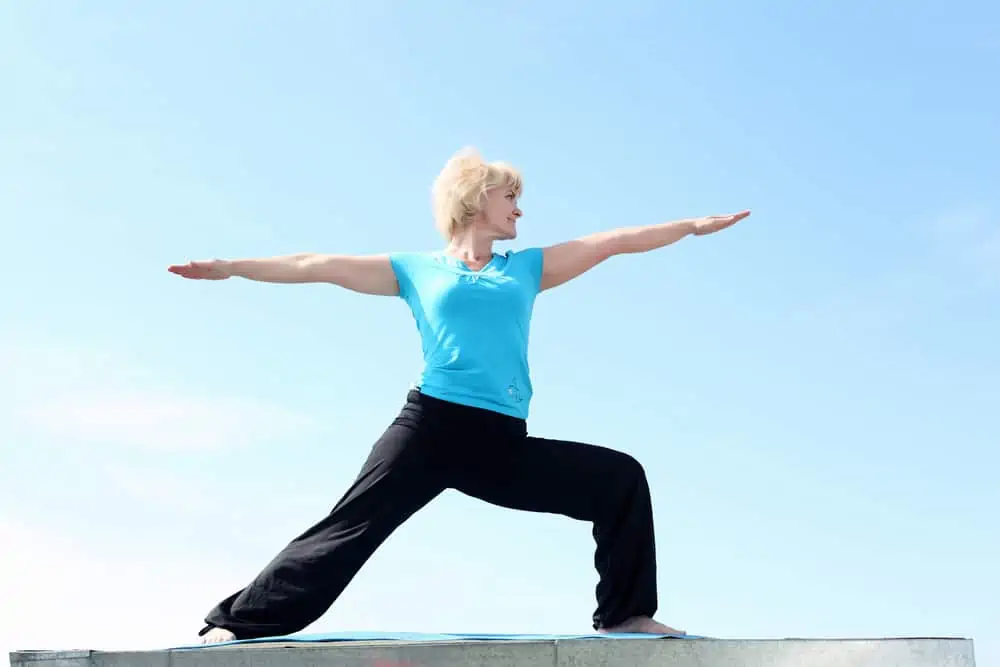
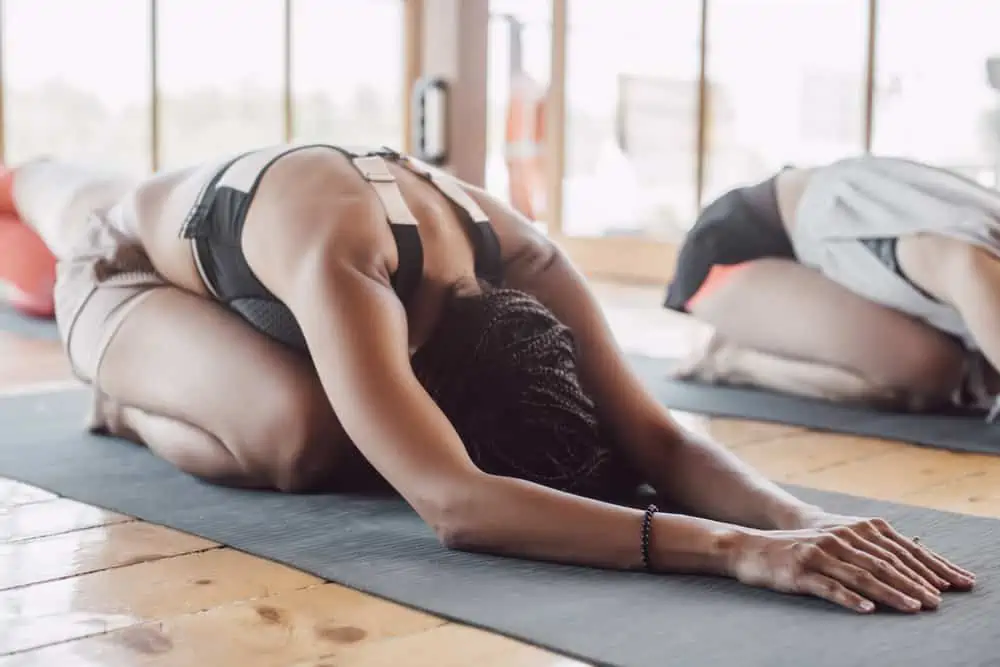
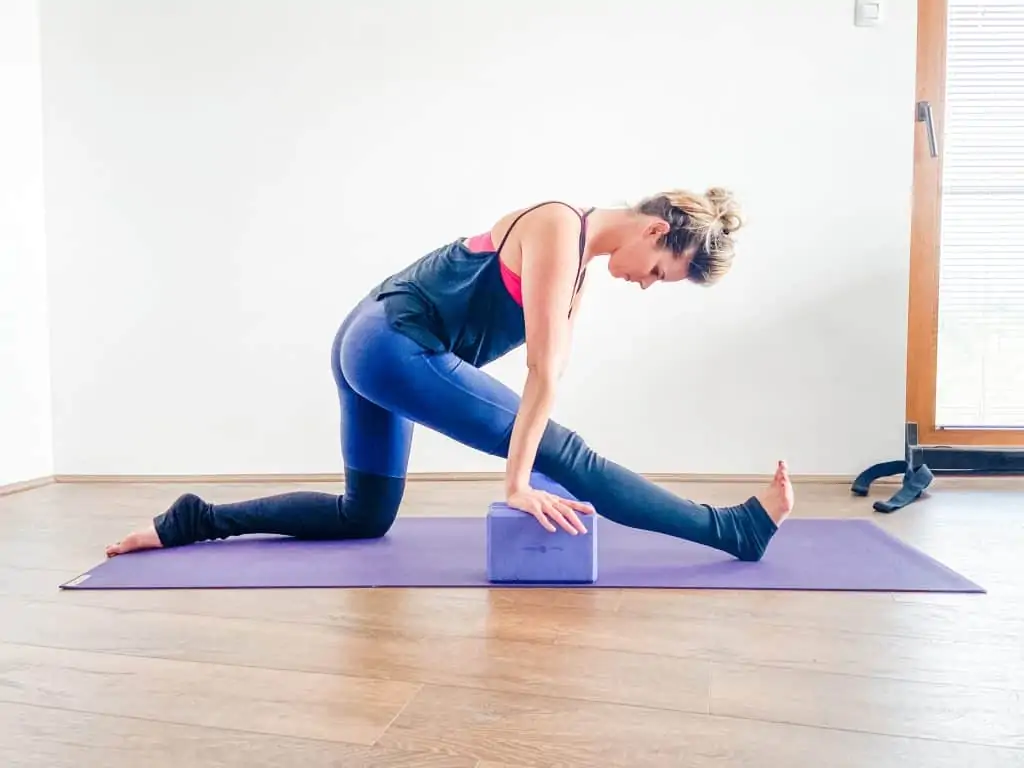
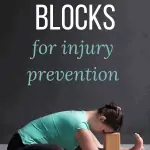
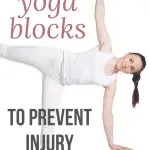
I practice yoga every day and I use yoga blocks too (mine are from Manduka)! I mainly use them whenever I lack the flexibility to get into a pose and as headrests as well, just as you suggested.
Great tips thanks for sharing these